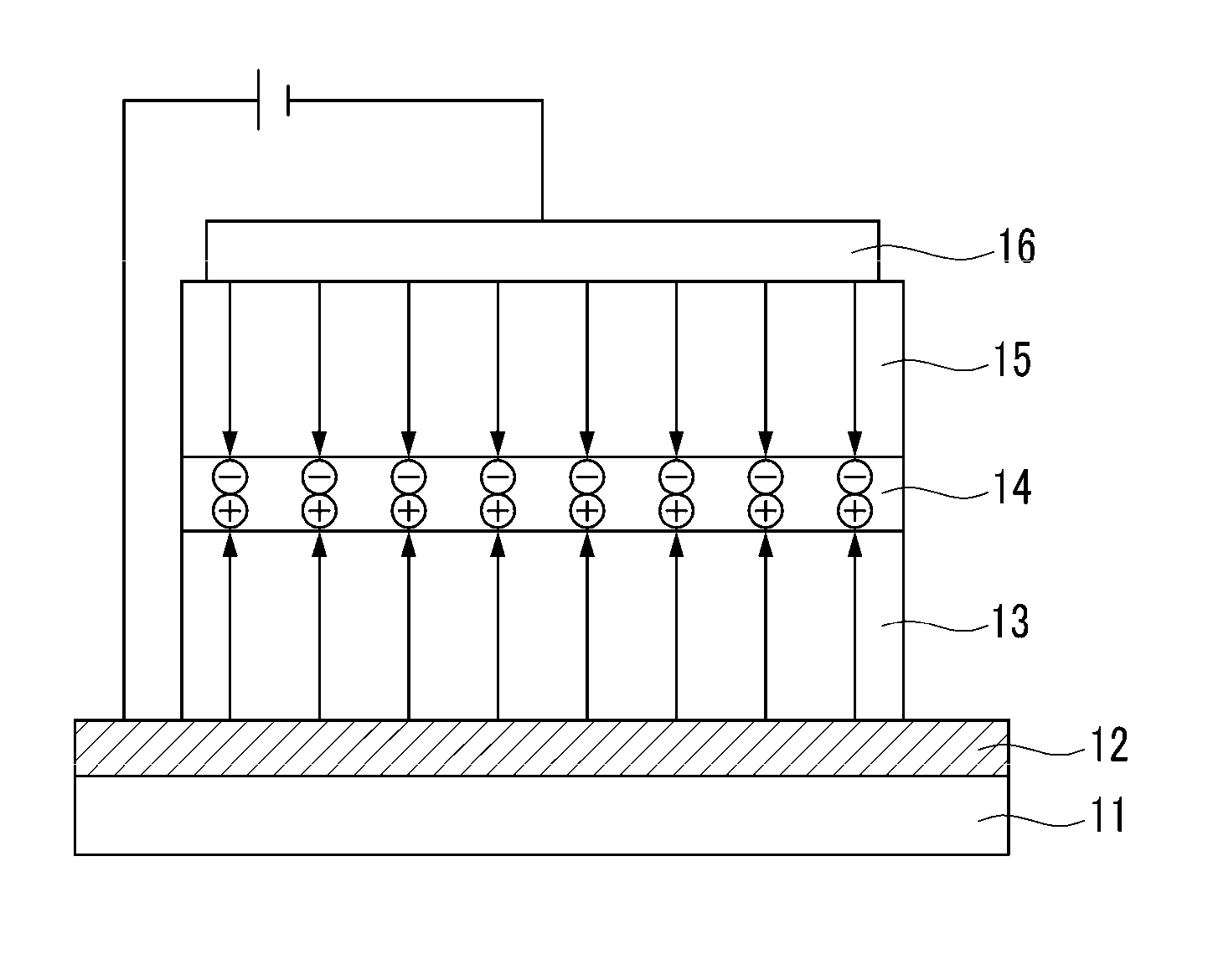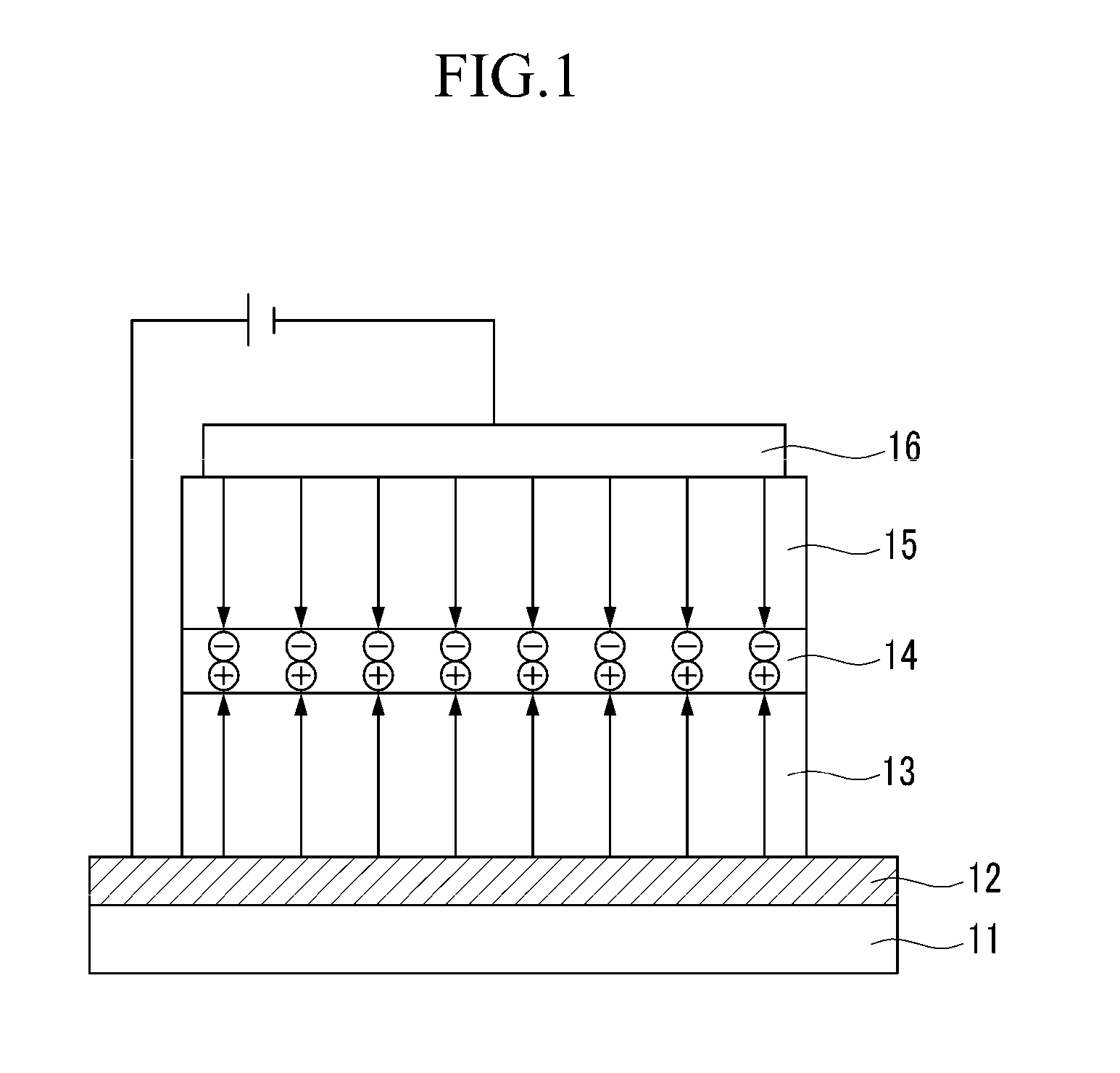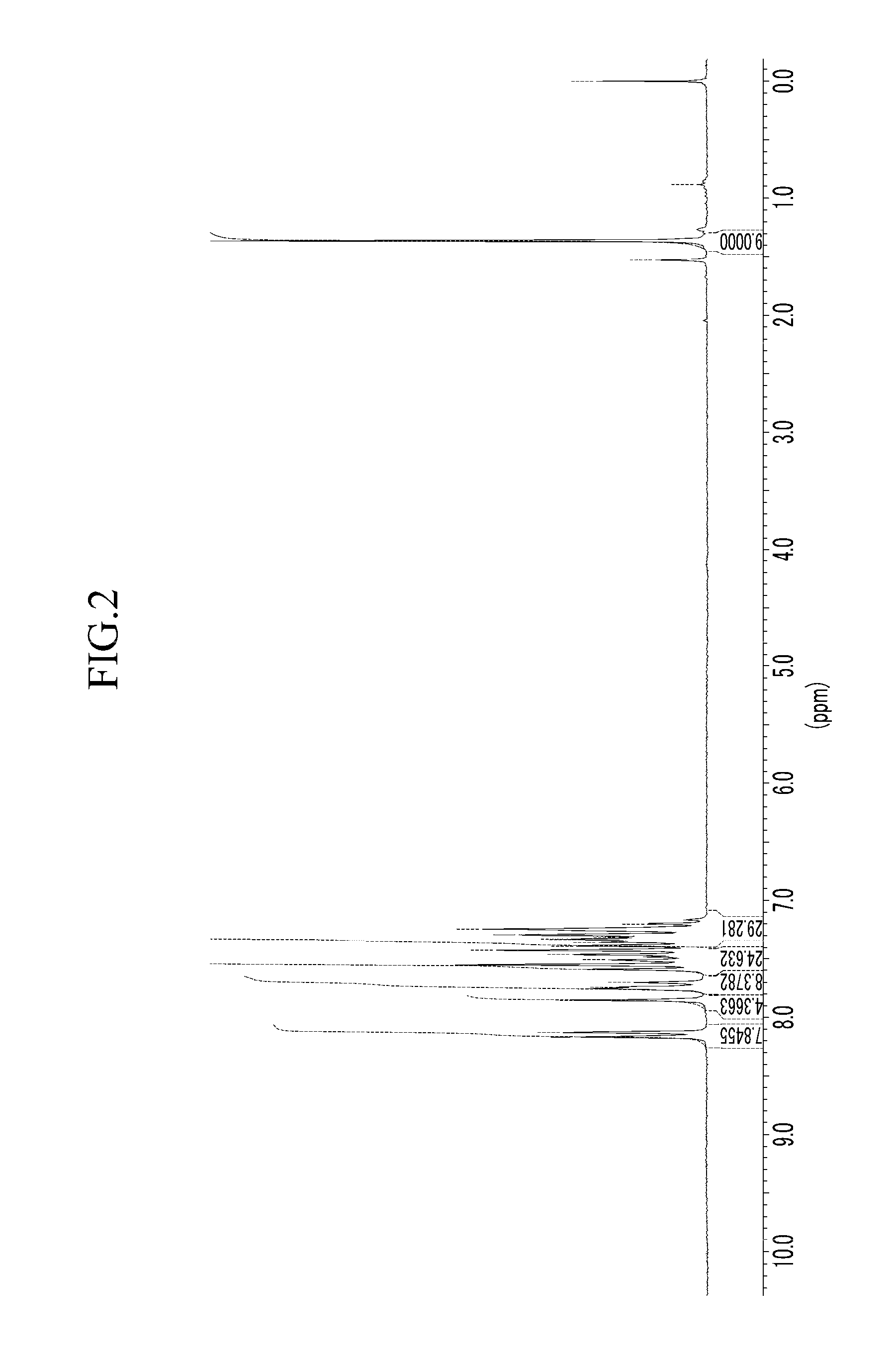Organic compound, and organic photoelectric device comprising the same
a photoelectric device and compound technology, applied in thermoelectric devices, discharge tubes luminescnet screens, natural mineral layered products, etc., can solve the problems of ineffective formation of excitons in the emission layer, limit in luminous efficiency, pixel defects, etc., and achieve the effect of easy dissolution in an organic solven
- Summary
- Abstract
- Description
- Claims
- Application Information
AI Technical Summary
Benefits of technology
Problems solved by technology
Method used
Image
Examples
example 3
Synthesis of M-3
[0154]
[0155]3.0 g (8.89 mmol)of 9-(3-bromophenyl)-9-H-fluorene-9-ol (A) and 1.77 g (4.04 mmol) of a material D were dissolved in 50 mL of dichloromethane under a nitrogen atmosphere, and 1.5 mL of a boron trifluoride diethylether complex (BF3.OEt2) was slowly added thereto in a dropwise fashion. The mixture was agitated at room temperature for 12 hours, and 50 mL of water was added thereto, completing the reaction. The reactant was extracted and washed four times with dichloromethane. The extraction solution was dried with anhydrous magnesium sulfate. Then, the solvent was removed from the dried solution under reduced pressure. The resulting product was purified through a silica gel column using a solvent of methylenechloride / hexane mixed in a ratio of 1:2, obtaining 3.3 g (75.8%) of white M-3.
example 4
Synthesis of M-4
[0156]
[0157]3.0 g (8.89 mmol) of 9-(4-bromophenyl)-9-H-fluorene-9-ol and 1.77 g (4.04 mmol) of a material D were dissolved in 50 mL of dichloromethane under a nitrogen atmosphere, and 1.5 mL of a boron trifluoride diethylether complex (BF3.OEt2) was slowly added thereto in a dropwise fashion. The mixture was agitated at room temperature for 12 hours, and 50 mL of water was added thereto, completing the reaction. The reactant was extracted with dichloromethane and washed four times with water. The extraction solution was dried with anhydrous magnesium sulfate. The solution was removed from the resulting solution under reduced pressure. The resulting product was purified through a silica gel column using a solvent of methylenechloride / hexane mixed in a ratio of 1:2, obtaining 3.0 g (69%) of white M-4.
example 5
Synthesis of M-5
[0158]
[0159]4.11 g (7.37 mmol) of a material E and 2.0 g (3.35 mmol) of a material F were dissolved in 40 mL of dichloromethane under a nitrogen atmosphere, and 1.5 mL of a trifluoride diethylether complex (BF3.OEt2) was slowly added thereto in a dropwise fashion. The mixture was agitated at room temperature for 12 hours, and 50 mL of water was added thereto, completing the reaction. The reactant was extracted with dichloromethane and washed four times with water. The extraction solution was dried with anhydrous magnesium sulfate. Then, the solvent was removed from the dried solution under reduced pressure. The resulting product was purified through a silica gel column using a solvent of methylenechloride / hexane mixed in a ratio of 1:2, obtaining 4.1 g (73%) of white M-5.
PUM
| Property | Measurement | Unit |
|---|---|---|
| internal quantum efficiency | aaaaa | aaaaa |
| internal quantum efficiency | aaaaa | aaaaa |
| internal quantum efficiency | aaaaa | aaaaa |
Abstract
Description
Claims
Application Information
 Login to View More
Login to View More - R&D
- Intellectual Property
- Life Sciences
- Materials
- Tech Scout
- Unparalleled Data Quality
- Higher Quality Content
- 60% Fewer Hallucinations
Browse by: Latest US Patents, China's latest patents, Technical Efficacy Thesaurus, Application Domain, Technology Topic, Popular Technical Reports.
© 2025 PatSnap. All rights reserved.Legal|Privacy policy|Modern Slavery Act Transparency Statement|Sitemap|About US| Contact US: help@patsnap.com



